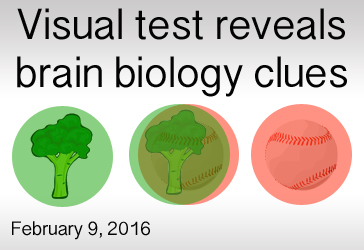Check out other stories from the Latest News
Visual Study Links Neurotransmitter to Autism
By Chelsea E. Toledo, M.A. on February 9, 2016

Background: Neurotransmitters are chemicals that send messages within the brain, contributing to a range of every day functions. There are seven primary neurotransmitters in humans: acetylcholine, dopamine, serotonin, norepinephrine, epinephrine, gamma-amino butyric acid (GABA), and histamine. GABA is the major inhibitory neurotransmitter in both the brain and spinal cord – helping to suppress excess stimuli. Previous studies suggest that Autism Spectrum Disorder (ASD) may stem from an imbalance between excitatory and inhibitory signals in the brain.
What’s New: On January 11, 2016, the journal Current Biology published a study exploring the relationship between GABA and the behavioral symptoms of people with ASD. The researchers administered a visual test to 20 individuals with autism and 21 with typical development, showing images in both eyes and testing how well the participants suppressed one image to focus on another—typically, the brain alternates focus between each eye and the singular mixed image. The researchers found that the participants with ASD were significantly slower to switch their focus between the images. The team then used a specialized brain imaging technique on the participants and found a correlation between the visual task performance and GABA activity in the brain.
Why it’s important: The ability to switch focus between two visual cues is thought to rely on the brain’s ability to control the inhibition and excitation of neurons, making this a good model to study inhibitory signals in the brain. Future studies could delve deeper into this relationship, determining the precise role of GABA inactivity in ASD.
Help me understand :
| Source(s) : |
| Tweet |

